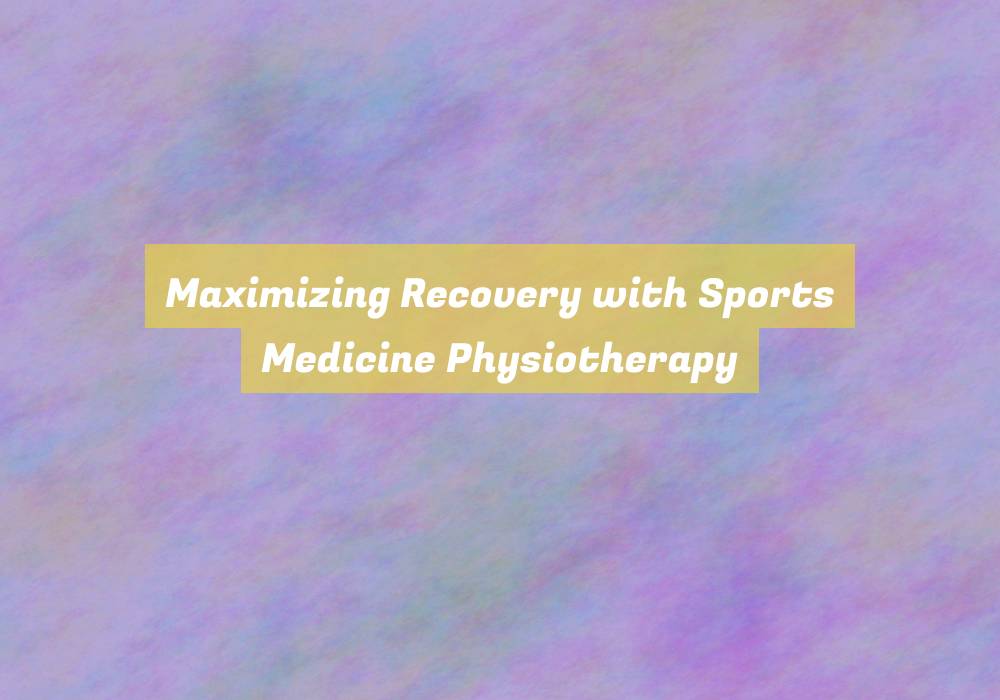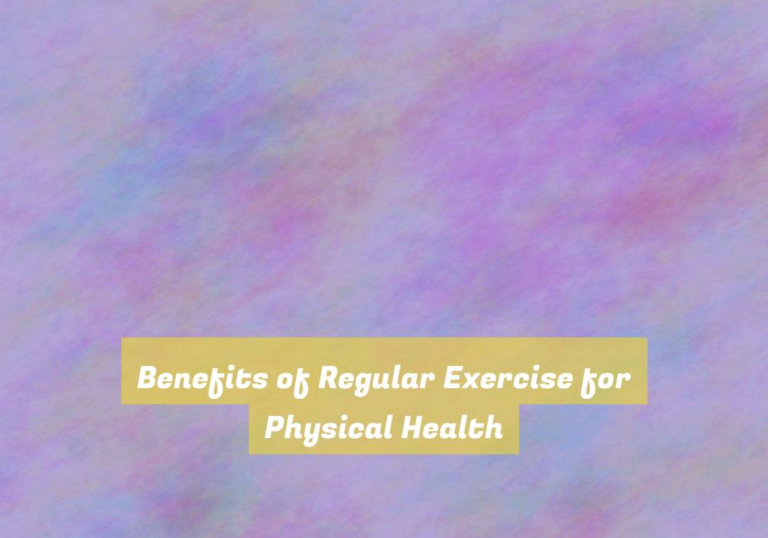Maximizing Recovery with Sports Medicine Physiotherapy
If youG??re an athlete, youG??re likely no stranger to the occasional injury. In fact, statistics show that approximately 8.6 million sports and recreation-related injuries occur each year in the United States alone.
But what if there was a way to not only recover from these injuries but also to come back stronger and more resilient?
Sports medicine physiotherapy offers a comprehensive approach to maximizing recovery and enhancing performance, allowing you to get back in the game with confidence. Whether youG??re a professional athlete or simply someone who enjoys staying active, the principles of sports medicine physiotherapy can help you achieve your goals and prevent future setbacks.
Benefits of Sports Medicine Physiotherapy
When undergoing sports medicine physiotherapy, you can expect to experience reduced pain and improved range of motion in your injured or overused muscles and joints. The tailored exercises and targeted manual therapy techniques employed by your physiotherapist will help alleviate discomfort and enhance your flexibility.
Through regular sessions, youG??ll notice a significant reduction in pain levels as the exercises and interventions work to strengthen and support the affected areas. Additionally, the improved range of motion will allow you to perform daily activities and sports-related movements with greater ease and comfort.
As you progress through your sports medicine physiotherapy, youG??ll also benefit from a personalized rehabilitation plan that focuses on restoring optimal function and preventing future injuries. This comprehensive approach wonG??t only address your current concerns but also equip you with the knowledge and tools to maintain a healthy and active lifestyle.
Embracing the benefits of sports medicine physiotherapy will undoubtedly support your journey towards recovery and overall well-being.
Key Components of a Physiotherapy Program
To establish an effective physiotherapy program, the key components will include:
-
Thorough assessment of your injury or condition: The initial assessment is crucial as it allows the physiotherapist to understand the nature and extent of your injury, which in turn informs the development of a targeted treatment plan.
-
Personalized treatment goals: Collaboratively setting personalized treatment goals takes into account your specific needs, lifestyle, and aspirations for recovery. These goals serve as a roadmap for your progress and help track the effectiveness of the physiotherapy program.
-
Tailored exercise regimen: The tailored exercise regimen forms the core of your physiotherapy program. ItG??s designed to improve strength, flexibility, and overall function, addressing the specific areas affected by your injury. The exercises are carefully selected and customized to gradually challenge and enhance your physical capabilities, promoting recovery while minimizing the risk of further injury.
In addition to these key components, the physiotherapy program may also include:
-
Manual therapy techniques: Manual therapy techniques such as joint mobilizations, soft tissue mobilizations, or therapeutic massage may be utilized to target specific areas of concern and facilitate healing.
-
Education on injury prevention: Educating patients on injury prevention strategies and proper body mechanics can help reduce the risk of future injuries and promote long-term health.
-
Strategies for pain management: Physiotherapists may provide strategies for managing pain, such as heat or cold therapy, electrical stimulation, or other modalities to help alleviate discomfort during the recovery process.
Injury Prevention Strategies for Athletes
Incorporate the principles of personalized treatment goals and tailored exercise regimens from your previous physiotherapy program into implementing injury prevention strategies for athletes.
By customizing injury prevention plans based on individual needs and specific sport demands, you can effectively reduce the risk of injuries.
Start with a thorough assessment of your biomechanics, muscle imbalances, and movement patterns to identify potential areas of concern.
Incorporate targeted strength and conditioning exercises to address any weaknesses or imbalances, focusing on enhancing stability, flexibility, and overall body mechanics.
Additionally, integrate sport-specific drills and techniques to improve skill execution and reduce the likelihood of overuse injuries.
Emphasize the importance of proper warm-ups, cool-downs, and recovery strategies to optimize performance and minimize the chance of injuries.
Furthermore, prioritize rest and recovery as essential components of your training program to allow your body to adapt and repair itself.
Maximizing Performance Through Physiotherapy
Maximize your athletic performance with targeted physiotherapy interventions tailored to enhance your strength, flexibility, and overall biomechanics. Through specific exercises and techniques, physiotherapy can help you achieve peak physical condition for your sport. By addressing muscle imbalances, improving joint mobility, and optimizing movement patterns, physiotherapy can enhance your overall athletic performance.
Physiotherapy can also focus on injury prevention, ensuring that your body is resilient and less prone to injuries during training and competition. By incorporating exercises that target specific muscle groups and working on dynamic stability, you can improve your agility, power, and endurance. Additionally, physiotherapists can provide guidance on proper warm-up and cool-down techniques to maximize your performance and reduce the risk of injury.
Furthermore, physiotherapy plays a crucial role in post-training or post-competition recovery, promoting faster muscle recovery and reducing muscle soreness. This allows you to maintain a consistent training schedule and perform at your best during competitions.
Conclusion
Overall, sports medicine physiotherapy offers numerous benefits for athletes. These benefits include injury prevention, maximizing recovery, and improving overall performance. By incorporating key components of a physiotherapy program and implementing injury prevention strategies, athletes can optimize their physical health and reach their full potential.
With the help of sports medicine physiotherapy, athletes can recover from injuries faster and get back to doing what they love with confidence and strength.





